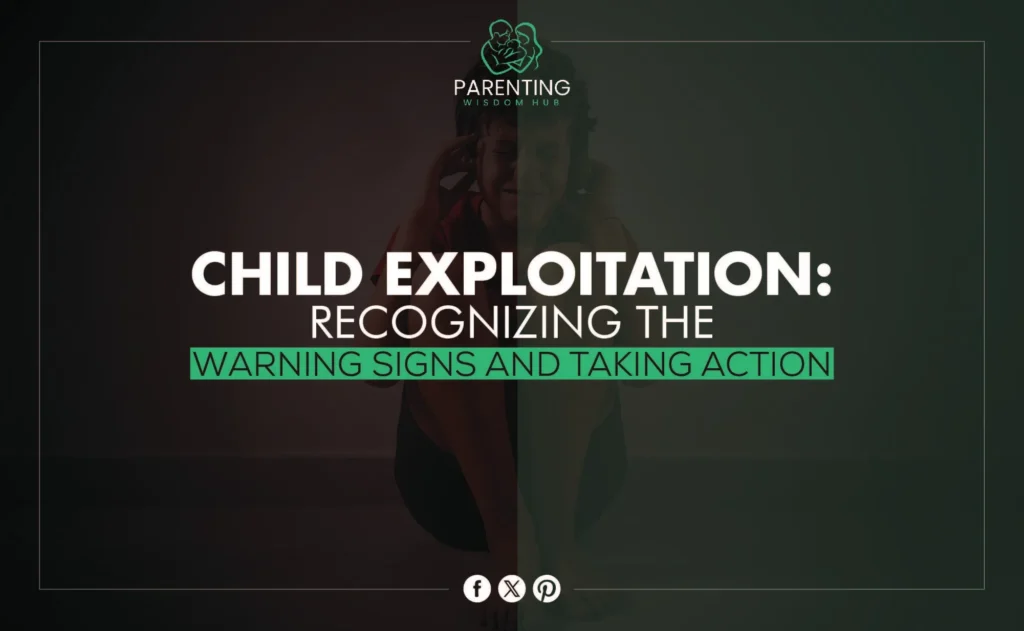Introduction
UNICEF estimates that 40 million children undergo exploitation annually. Sofia, a young child, was approached online by a predator posing as a friend. Her innocence was exploited, and she experienced suffering that may have been avoided if detected sooner.
Child exploitation involves manipulating or coercing minors for personal benefit. Sexual exploitation, where minors are abused or trafficked for sexual purposes, and human trafficking, where children are illegally transported for labor or sexual activity, are examples of this. Emotional abuse and psychological exploitation of children are also a significant issue.
Early detection of child exploitation is essential for prevention. Knowing the warning signs lets people protect children quickly. Awareness improves reporting, victim support, and community exploitation prevention.
Different Forms of Child Exploitation
- Labor Exploitation: Forced labor involves children working long hours in risky conditions for inadequate pay. This exploitation deprives children of childhood and schooling, creating long-term mental and physical harm. Children must work hard in perilous agriculture, mining, and manufacturing.
- Sexual Exploitation: Internet grooming involves predators manipulating and exploiting children. Trafficking, which forces youngsters into sexual activity, and abuse are also included. Sexual exploitation can traumatize and permanently damage a child’s mental health.
- Human Trafficking: Children are trafficked internationally or domestically for forced labor, sexual exploitation, or other purposes. Traffickers manipulate victims by deception, coercion, or abduction. Forced labor, sexual servitude, and other exploitation can deprive children of their independence and dignity.
- Emotional and Psychological Exploitation: It involves manipulation, compulsion, and psychological control. This can include threats or intimidation, which lowers the child’s self-esteem and autonomy. Exploiters may utilize psychology to keep children from seeking help.
- Domestic Servitude: Children are made to work in private homes, where they do chores and care for others. Most of the time, these kids don’t have much freedom and are cut off from the rest of the world. They may also be abused or neglected.
- Child Soldiers: Kids are forced to work as soldiers, messengers, or laborers in places where there is war. They are often severely abused, made to do horrible things, and deprived of their rights and youth.
- Commercial Sexual Exploitation: This includes actions like pornography, prostitution, and sex tourism, where kids are used for money. Commercial sexual exploitation hurts the victims’ mental health and their ability to get legal help.
- Online Exploitation and Abuse: In addition to training, this includes making and sending out materials that sexually abuse children. Kids are forced to make inappropriate content that is then posted online or sold.
Recognizing the Warning Signs
Behavioral Changes
- Withdrawal and Secrecy: Exploited children may withdraw from family and friends or become secretive. Reluctance to share, mood swings, or personality changes can indicate fear, anxiety, or melancholy. Secrecy might shield individuals from exploitation or hide their position.
- Sudden Possession of Unexplained Items: A youngster suddenly acquiring expensive or odd stuff like gifts, money, or other assets without explanation may be a red flag. This behavior may imply that the youngster is obtaining products from exploiters or engaging in actions that result in such rewards, maybe due to exploitation.
- Increased Aggression or Hostility: A child who acts aggressively or hostilely out of stress or pain related to exploitation may be doing so out of character. This behavior change could indicate that they are angry or frustrated about their situation.
- Drop in Academic Performance: A child’s declining grades or lack of enthusiasm in school may suggest concerns that distract them from schoolwork. It may be a contributing factor.
Physical Indicators
- Unexplained Injuries: Unexpected bruises, burns, or other abuse indicators should be considered seriously. These injuries may come from physical abuse or unsafe working conditions in labor exploitation. Frequent or inconsistent explanations for these injuries may indicate child abuse.
- Neglect: Malnutrition, poor cleanliness, and lack of medical treatment indicate neglect. Uncleanliness, underweight, or untreated health conditions may indicate poor care. Neglect can be an indicator of exploitation when the child’s needs are ignored.
- Chronic Fatigue: In particular, in labor or trafficking circumstances, persistent weariness or fatigue that impairs daily activities might be a sign of exploitation. Overwork or trauma can cause weariness.
- Inconsistent Clothing: Neglect or exploitation may occur if children are often dressed inappropriately for the weather. For instance, wearing inadequate clothing in extreme weather may indicate neglect or forced labor.
Social and Environmental Red Flags
- Isolation: Children who are excluded from school, classmates, or extracurriculars may be subjected to exploitation. Exploiters may isolate children to control and monitor them, preventing them from seeking help.
- Association with Older or Controlling Individuals: A youngster may be at risk of exploitation if they are regularly observed with older adults or those who act in an authoritarian manner. This behavior may imply that the child is being manipulated or coerced by someone.
- Frequent Absences or Tardiness: School absences or unexplained tardiness may indicate a youngster is being kept from usual activities. Work obligations or other exploitative situations may prohibit the youngster from attending school consistently.
- Unusual Financial Transactions: Financial transactions or access to money that look disproportionate to a child’s typical activities or allowances may indicate exploitation. Money management or transfer may be contradictory with their age and financial awareness.
These additional signals assist in identifying and resolving suspected child exploitation cases, ensuring timely action and support for affected children.
The Role of Technology
- Access to Personal Information: Technology lets predators access children’s personal information on social media, gaming platforms, and chat rooms. The child can be manipulated or blackmailed with this information.
- Anonymity of Predators: Internet privacy lets predators hide their real names, which makes it easier for them to take advantage of children without being caught.
- Ease of Access: The possibilities for grooming and exploitation grow because of technology’s constant and easy-to-access platform for predators to contact and interact with children.
- Online Communities: Online communities and forums are places where predators can meet and target children who are easy to target. Often, they use shared hobbies to build trust.
- Use of Apps and Games: Predators can use many apps and online games to let users talk to each other, talk to kids, and train them.
- Manipulation Through Digital Content: Predators may use explicit pictures or videos on digital content to dull children’s senses and make bad behavior seem normal, which makes it easier for them to be manipulated.
- Infiltration of Private Spaces: Predators can sneak into private online spaces like messaging apps and secret groups to talk to kids and take advantage of them without being seen.
- Lack of Parental Oversight: Digital gadgets and platforms can reduce parental control, making it more straightforward for exploiters to approach and groom youngsters undetected.
- Tracking and Monitoring: Predators can also use technology to monitor what a child does and says online, which helps them learn about and take advantage of their target.
- False Identities: To trick kids and build relationships that enable exploitation, predators frequently use fake profiles or impersonate trusted individuals online.
These points demonstrate how technology can be used, emphasizing the necessity for digital child protection.
Taking Action
- Understanding Reporting Channels: Learn how to report child exploitation to local child protective services, law enforcement, and hotlines. Knowing where and how to report helps speed up and ensure proper handling.
- Maintaining Confidentiality: When you act, make sure that any information you share about the exploitation stays private to protect the victim’s privacy and stop more harm.
- Educating Yourself and Others: Be aware of exploitation signals and preventative methods. Share this information with your community to raise awareness and alertness.
- Promoting Support Resources: Help victims improve by encouraging them to use resources like support groups and therapy services. These can help them get through the aftermath of exploitation.
- Encouraging Open Communication: Make youngsters feel comfortable discussing their issues. Open communication makes it easier for youngsters to seek aid and prevents exploitation.
- Collaborating with Organizations: Join child safety and exploitation prevention groups. These groups frequently have the skills and resources to combat exploitation.
- Participating in Prevention Programs: Join or support community child exploitation prevention programs. Workshops, educational campaigns, and other child protection measures may be included.
- Monitoring and Follow-Up: Monitoring and following up after reporting and supporting the child will ensure that appropriate actions are taken and that the child’s needs are satisfied.
Addressing and preventing child exploitation requires proactive and educated action to protect community children.
Prevention Strategies
- Education and Awareness: Inform children, parents, and caregivers about exploitation and how to report suspicious conduct. Regular training and awareness can increase vigilance.
- Open Communication: Promote honest communication between youngsters and trusted adults. Encourage kids to talk about their worries and uncomfortable situations.
- Internet Safety Practices: Promote internet safety by adopting strong social media privacy settings, being cautious about exposing personal information, and monitoring online activities.
- Parental Controls: Monitor and block harmful web content using parental control software. Check and update these controls as technology changes.
- Training for Professionals: Train educators, healthcare workers, and other child-care professionals. This training should emphasize exploitation detection and response.
- Legal and Policy Advocacy: Promote stricter child exploitation legislation. Support legislation to improve child protection and increase sanctions.
These ways of stopping child exploitation can make the world a better place for kids and greatly lower the chance of it happening.
Conclusion
Every community member must be vigilant, educated, and proactive to avoid child exploitation. We can protect children by understanding exploitation, identifying warning signs, and using technology appropriately. Act now, support victims, and advocate for better protections to make children safer.
Prevention requires education, open communication, and community engagement. Together, we can eradicate child exploitation and ensure every child grows up in a safe, supportive, and nurturing environment.


